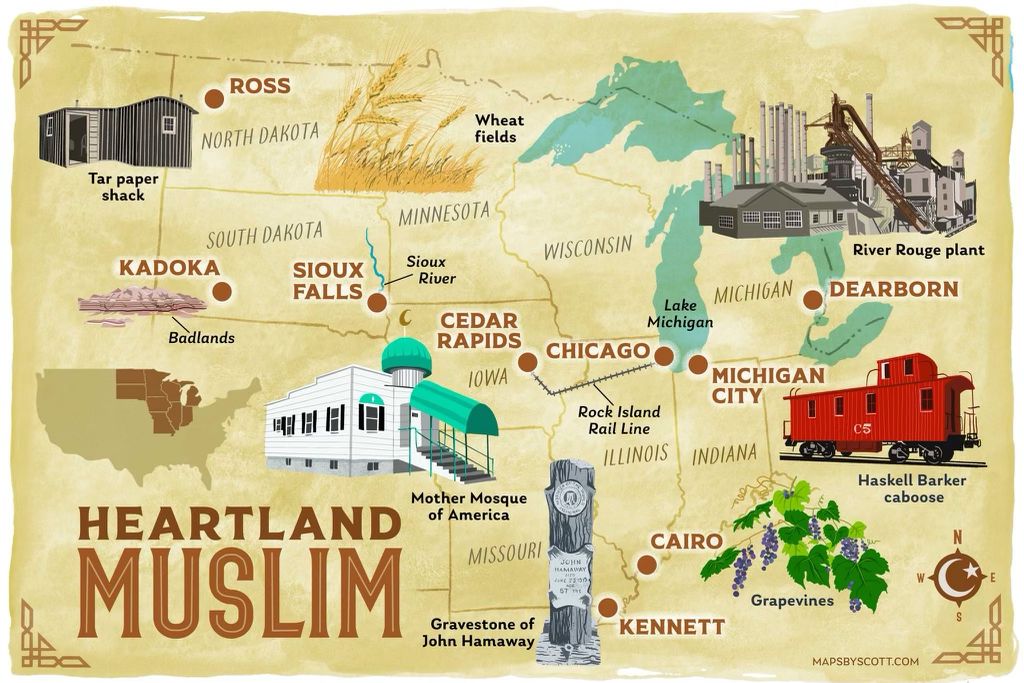The guest in this episode of the “Wider Angle” podcast was Edward E. Curtis IV, a scholar of Muslim-American, African-American and Arab-American history, and the author of 13 books. This conversation was based on his book “Muslims of the Heartland: How Syrian Immigrants Made a Home in the American Midwest.”
Both sides of Curtis’ mother’s family migrated to the U.S., just some of the 100,000 people who came to the country among the half million who left Ottoman Syria. He explains how from the late 1800s to 1920, they left the region, which at the time included Syria, Lebanon, Palestine and Jordan. Curtis grew up knowing about “a Syrian Midwest” as a community and continued studying it in depth as a scholar. Digging into archives, he found a rich trove of information about the different aspects of Syrians’ settlement in the U.S. Midwest. As the business thrived in the Great Lakes region, tens of thousands migrated there because of railroad and waterway development. They did their best to organize public life as Muslims and built ties among themselves as well as with non-Muslims.
In the podcast, Curtis explained the interconnections that made the Midwest, and what he calls “a human history, rather than natural history that forged this region.” He cites the importance of “the ethnic-religious congregation” in towns and cities like Detroit, Michigan; Cedar Rapids, Iowa; and Michigan City, Indiana, for preserving the local communities’ tradition as well as in the process of assimilation.
But, like many other immigrant groups, Syrian Muslims were also affected by “the larger racial politics of the United States,” like the racist quotas that for much of the middle part of the 20th century restricted Arab immigration, or the changes brought by the 1965 Immigration and Naturalization Act. Curtis also elaborates on the history behind many Syrians’ embrace of whiteness from the late 19th century onward and why he says some contemporary Arab Americans still do today. And while there was always social discrimination, Curtis elaborates on how the legal discrimination varied with time and place. He crystallizes these differences among urban centers in which Arab-American Muslims had settled.
Asserting that he is “correcting the stereotypes” and “false narratives” about the Midwest as an all-white Christian land, Curtis says in the podcast, “I am adding a narrative to try to fuel a different kind of imagination that takes away the past from this kind of idealized white past from white supremacists, and gives it back to its rightful owners — which is all of us — who have made this place what it is today.”
Listen to the conversation to hear the wider angle of one immigrant community’s story and its effect on the Midwest, as a message of a long-standing diversity and plurality in that region. It is available wherever you listen to podcasts and on New Lines’ YouTube channel here.
“Wider Angle” is produced and hosted by Riada Asimovic Akyol


